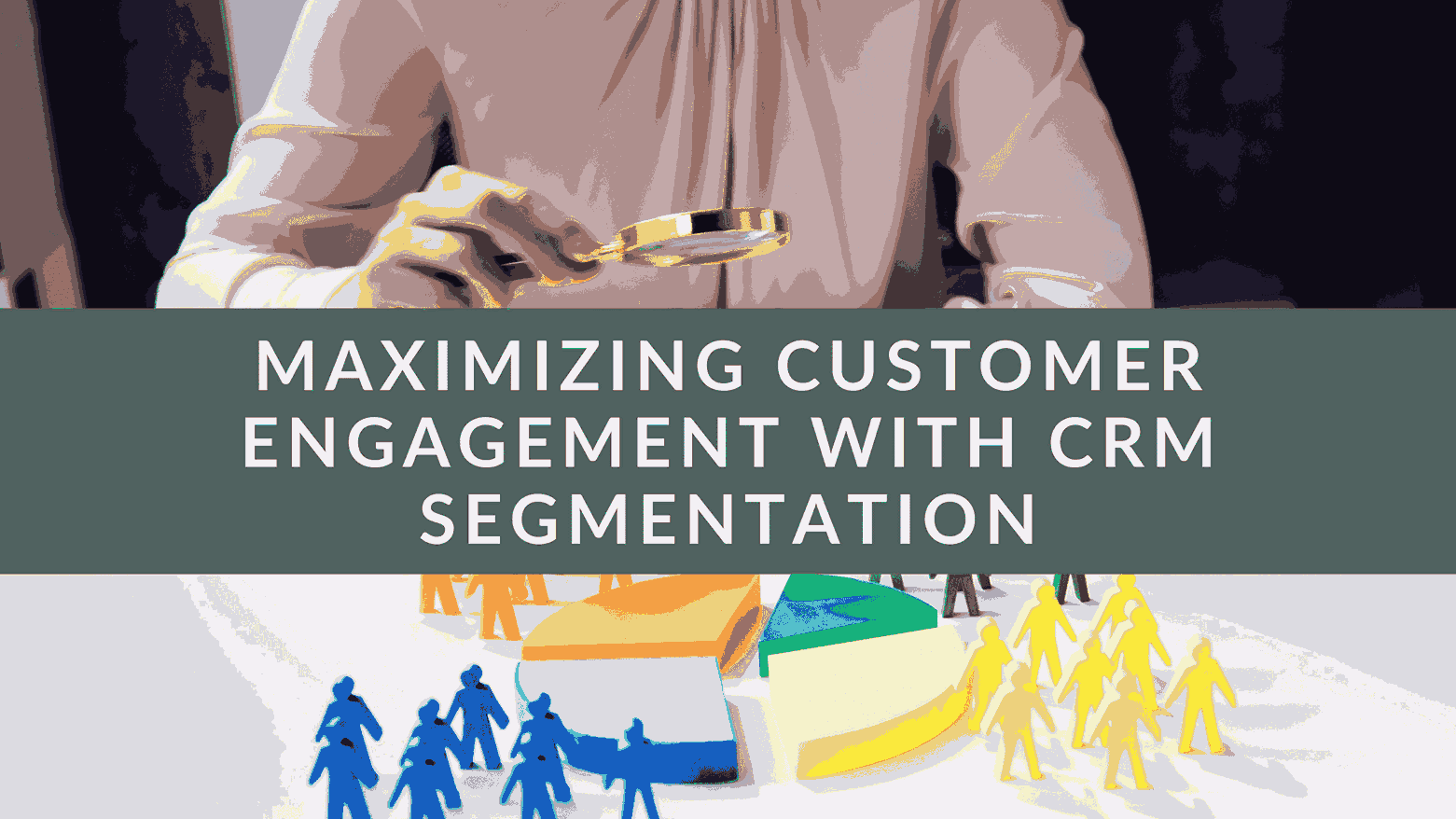Maximizing Customer Engagement with CRM Segmentation
- Proposal Software Customer Relationship Management


In the world of modern marketing, the days of blindly casting a wide net in the hopes of catching a few potential customers are long gone. Today, the key to successful marketing lies in understanding your customers on a deeper level and tailoring your approach to their unique needs and preferences. That’s where Customer Relationship Management (CRM) segmentation comes into play. In this article, we’ll explore the concept of customer segmentation, its importance, and provide you with five ways to effectively segment your customers through your CRM software, tools, and analysis.
What is Customer Segmentation?
Customer segmentation is like shining a spotlight on your customer base, revealing distinct groups of individuals who share common characteristics. These characteristics can be based on demographics, purchase history, or any other relevant factors that matter to your business. When you segment your customers, you create clear categories, making it easier to craft targeted marketing campaigns.
Imagine you’ve been shooting marketing messages into the dark, hoping to hit your target. Now, with customer segmentation, you have a well-lit archery range, and your chances of hitting the bullseye have drastically improved.
Read more about driving customer engagement through segmentation
How Does Segmentation Work?
The inboxes of most people are bombarded with generic emails that are often sent straight to the trash bin. If your content provides a personalized experience, the likelihood of your message being opened and engaged with significantly increases. Customer segmentation personalizes the customer experience, leading to greater satisfaction and, in turn, benefiting your company.
Learn more about maximizing customer engagement through CRM
How to Create a Customer Segmentation Strategy
To create an effective customer segmentation strategy, you need to follow a structured approach:
- Identify Your Customers: Collect demographic information, analyze trends, and understand their purchase history.
- Create Customer Personas: Divide your customers into groups based on common traits, creating archetypes to articulate their needs.
- Prioritize Segments: Evaluate and prioritize your best segments to develop marketing, sales, and support strategies tailored to your customers’ specific needs.
Discover why CRM is vital to maximizing customer engagement
The Importance of Customer Segmentation Analysis
Customer segmentation analysis is about gaining a deeper understanding of your target customer demographics. This analysis optimizes various aspects of your business, from marketing campaigns to sales, support, and product placement. There are different types of customer segmentation analysis, including behavioral, demographic, economic, and industry/vertical.
The importance of this analysis lies in two key aspects:
- Determining Future Value: It helps you understand the future value of different customer profiles, allowing you to discern your ideal customer and target them more effectively.
- Continuous Optimization: It enables businesses to continuously optimize their strategies and services to retain existing customers and maximize their lifetime value.
Choosing the Right Customer Segmentation Tool
Selecting the right CRM segmentation tool is crucial for success in sales, marketing, and customer support. When choosing a tool, consider the following factors:
- Ease of Use: The tool should be user-friendly and intuitive.
- Customizability: It should allow you to tailor segmentation criteria to your specific needs.
- Scalability: Ensure the tool can grow with your business.
- Ease of Integration: The tool should seamlessly integrate with other systems, offering a complete customer profile.
Explore 5 ways to maximize your CRM use
Do All CRMs Include Customer Segmentation Software?
Yes, most CRM systems include customer segmentation software to varying degrees. The key to a successful customer segmentation strategy lies in choosing the right CRM that suits your needs. Your CRM should effortlessly sort your customers into different categories and connect data from other systems to provide a complete customer profile.
It’s worth noting that a lack of communication between the CRM and other systems can hinder effective segmentation, as pointed out by Forrester Consulting.
What Does Your CRM Need to Offer?
Your CRM should provide:
- Reliable Contact Management: Efficiently manage your contacts.
- Various Data Fields: Store different types of data for accurate segmentation.
- Sales Cycle Tracker: Monitor where customers are in their buying journey.
- Unified Customer View: See a comprehensive picture of your customers.
- Analytic Tools and Reports: Access valuable insights for better decision-making.
By using customer segmentation effectively, you can connect with your customers on a personal level, addressing their unique pain points, goals, and values that matter specifically to them. This approach results in higher customer engagement, increased customer satisfaction, and ultimately, greater business success.
In conclusion, maximizing customer engagement with CRM segmentation is a strategic approach that no modern business can afford to overlook. By understanding your customers, personalizing their experience, and choosing the right CRM tools, you’ll hit the marketing bullseye and build lasting relationships with your audience.





